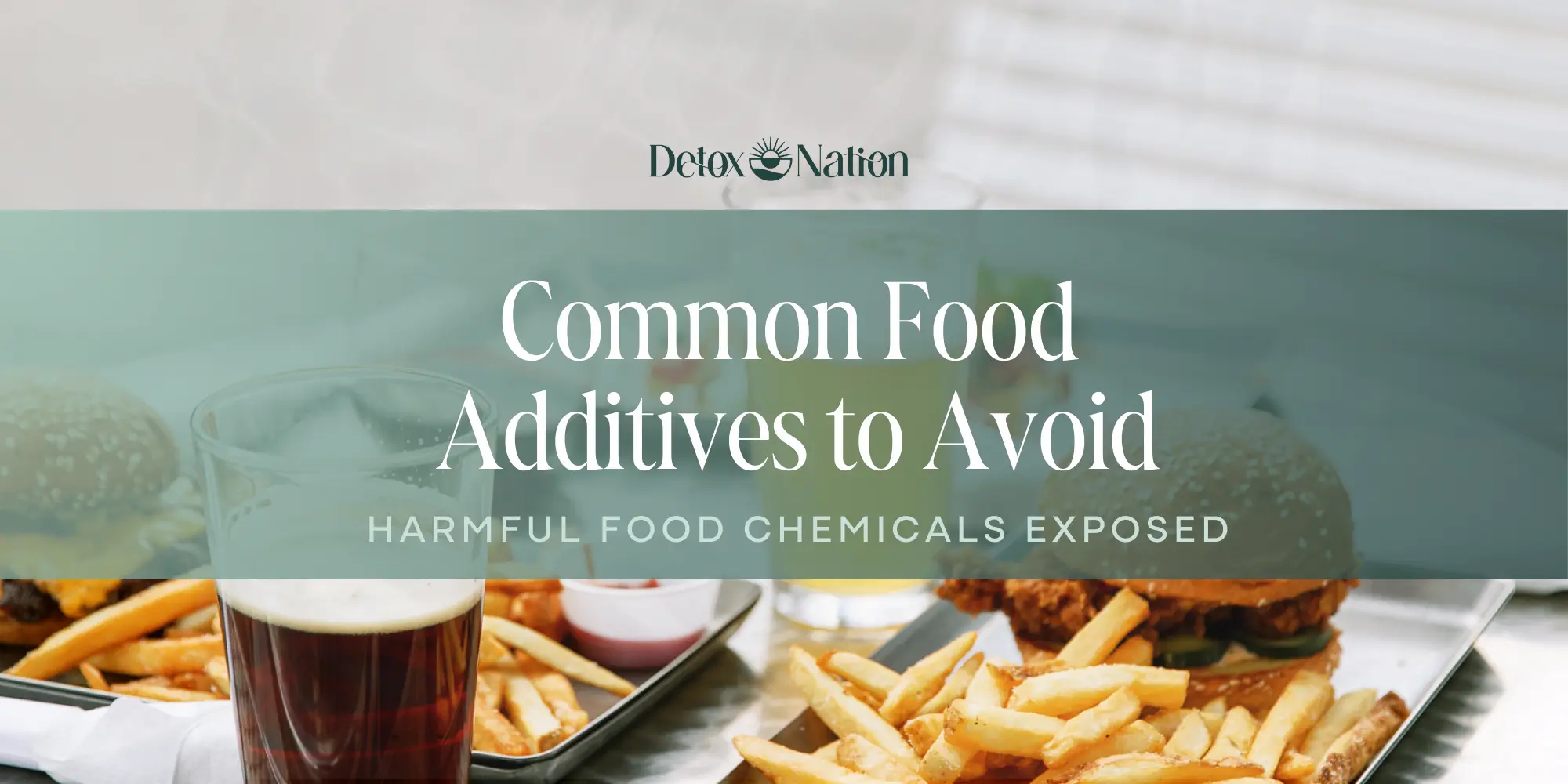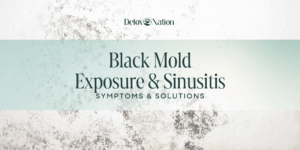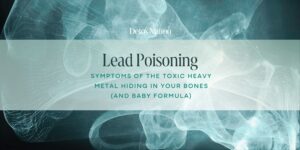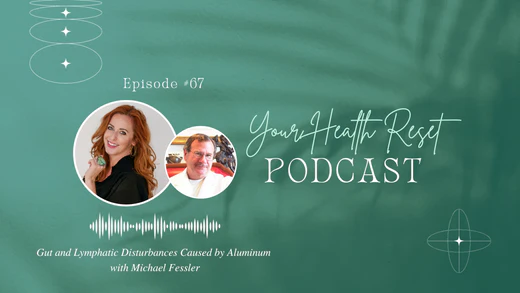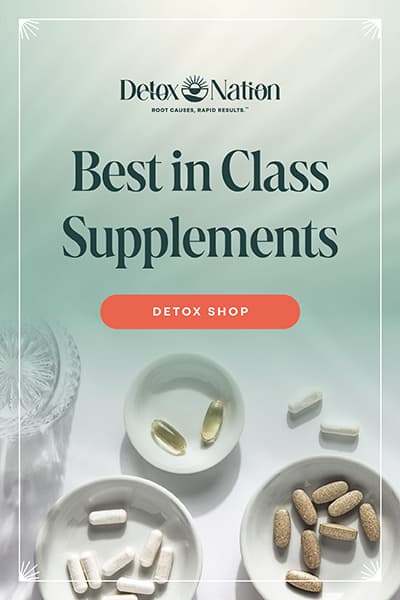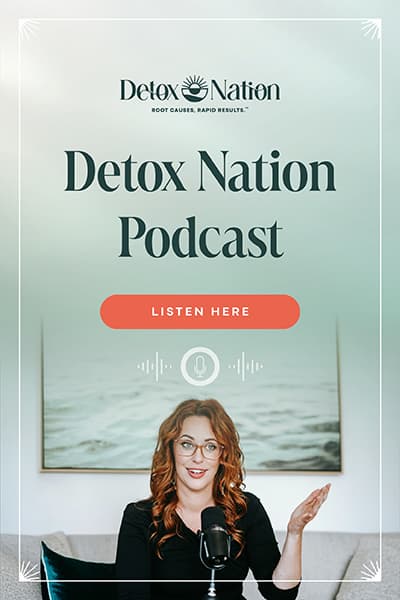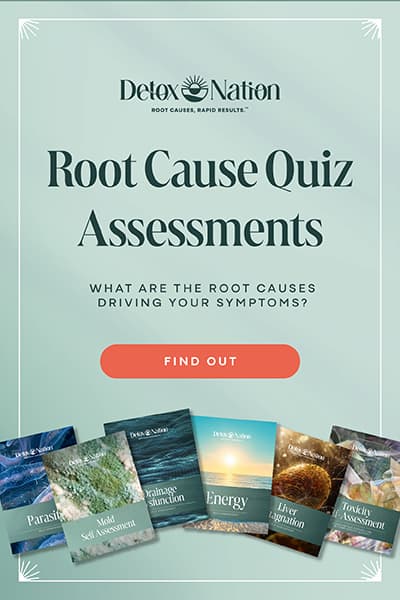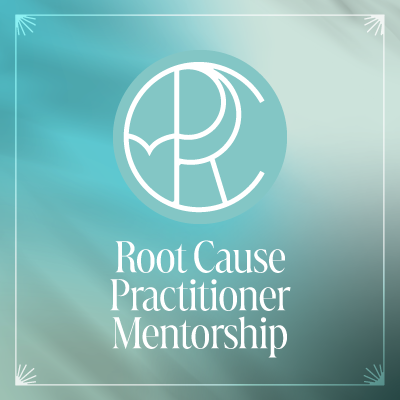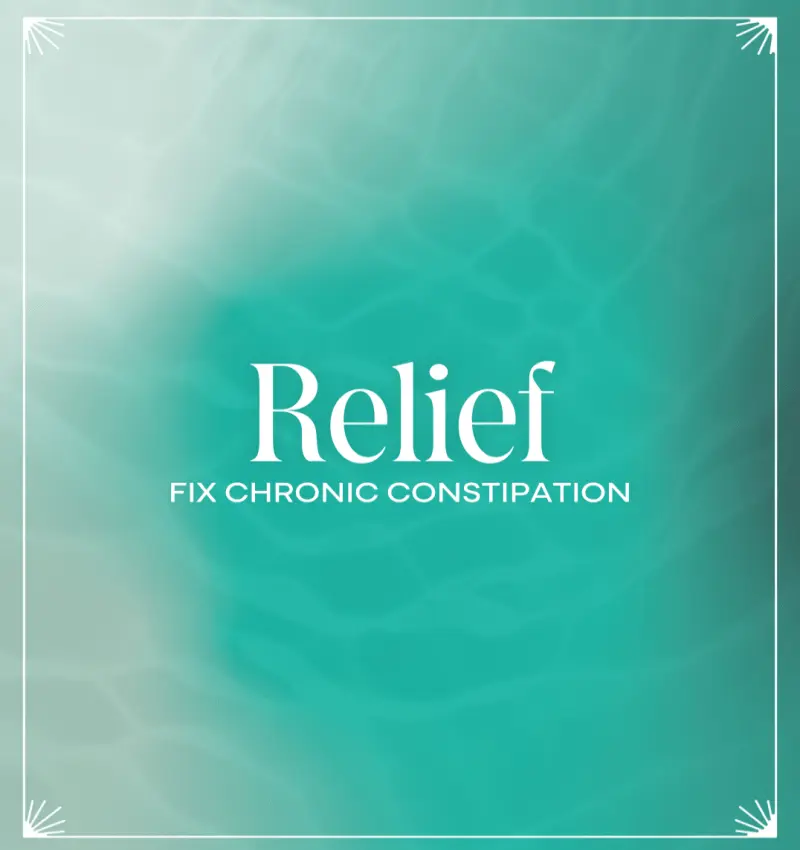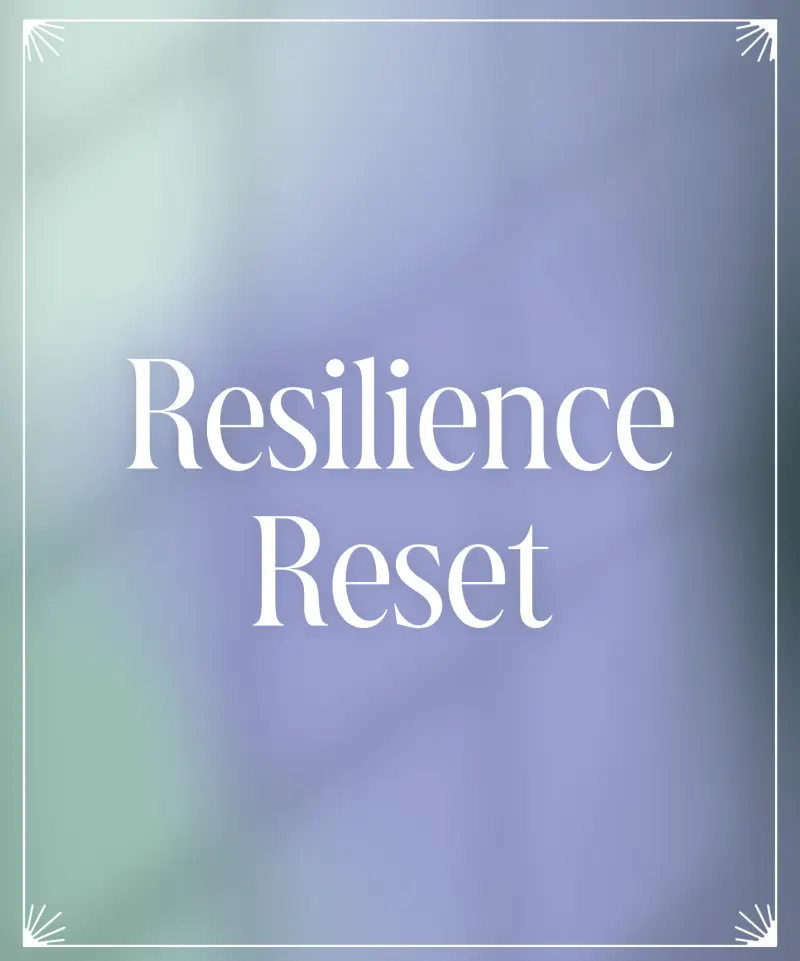“Let Food Be Thy Medicine.”
The famous quote by Hippocrates assumes you’re eating safe and nutritious food. But in today’s world of common food additives, preservatives, food chemicals, industrialized “food products,” and deceptive labeling it can be hard to do.
Our food supply has become a wild mix of industrial chemicals disguised as “ingredients.”
These aren’t just hiding in fast food; they’re lurking in your pantry, even in stuff you think is healthy.
And while our government agencies say these chemicals are “generally recognized as safe,” they don’t always tell us the whole story.
This stuff is real, and the downstream health effects are serious. But the good news? It’s totally fixable—by you.
Let’s be real, you can’t rely on the government to keep this junk out of your food.
And I can’t follow you around the grocery store taking toxic things out of your cart and putting them back on the shelves. (That would be weird, right?)
You’ve got to protect yourself from these food-landmines.
It starts with awareness and knowledge, combined with courage to see the truth and a determination to be healthier. Which – if you’re here – you’ve got!
Let’s have an honest conversation about our food. I’m ready! Are you?
Key Takeaways
- Today’s food is more toxic than you think.
- “Generally Recognized As Safe” does not mean safe, nutritious, or healthy.
- You can increase your awareness, avoid food landmines, and reclaim your health.
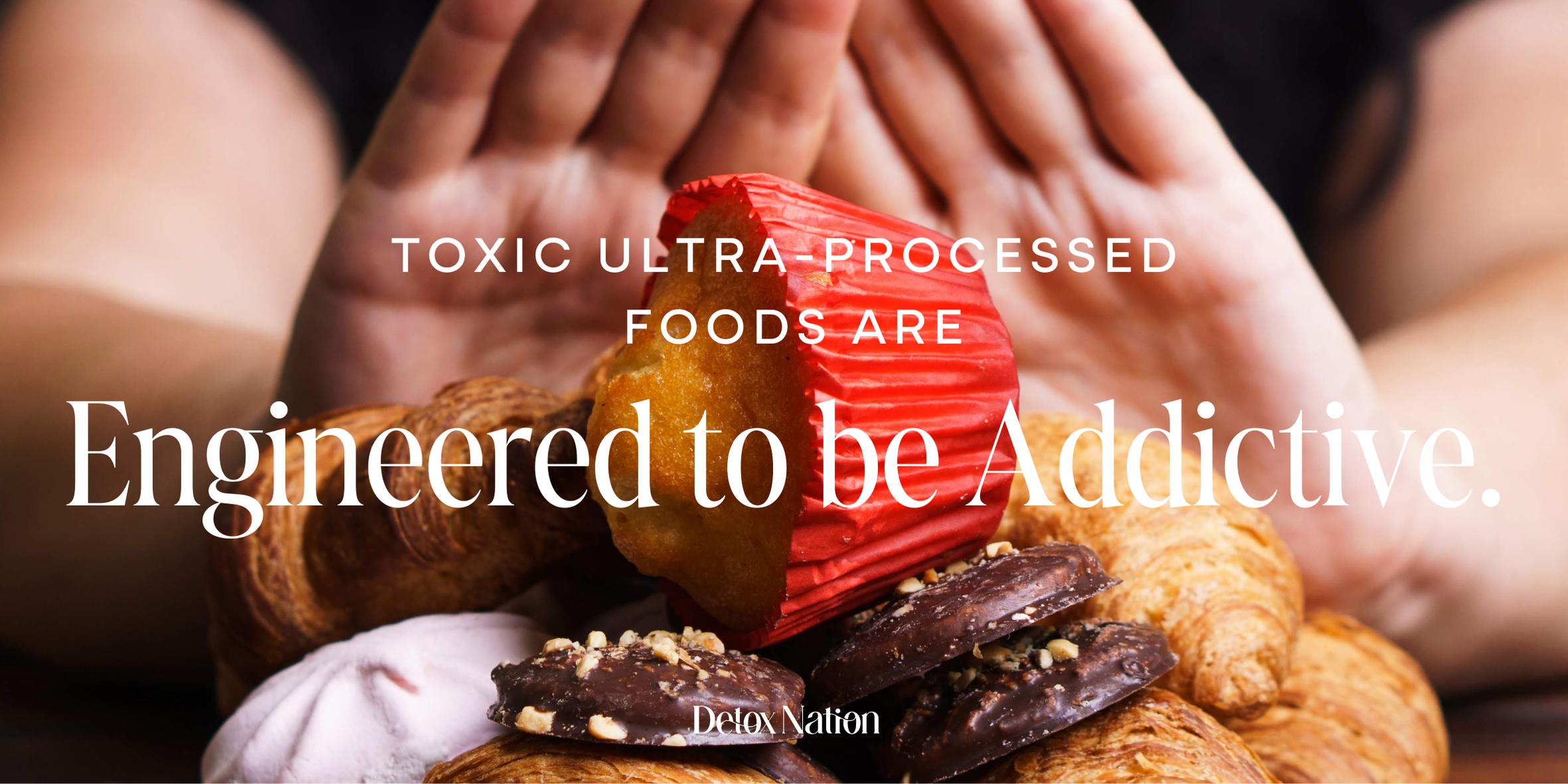
I totally get it.
Life is so hectic, and you’re overwhelmed with everything you have to do on the daily: Work, errands, take care of the kids, raise your parents, holidays, chores…and more.
Who has time to cook?
In our modern world, meals have become an inconvenience that we put the least amount of energy into as possible.
But your food MATTERS.
Last week I heard about a 10-year-old boy who was diagnosed with “ARFID.”
What the heck is that?
It’s a trendy eating disorder diagnosis and the acronym stands for “Avoidance Restrictive Food Intake Disorder.”
Basically, he gets overwhelmed and stressed out when around food (1).
His Mom described a situation where they put Nutella spread on a pretzel and offered it to him.
Crunchy, salty, chocolatey – what’s not for a kid to love?
Instead, he physically backed away and they could literally see his heart pounding as he looked at them like a deer in the headlights.
Absolutely heart-breaking.
She explained that treatment options are either anxiety medication or food therapy. In his case, the food therapy was making him anxious, so it was suspended.
I asked if he has any foods he willingly eats that don’t cause anxiety.
Oh yes, she replied. He’ll eat pizza, mac and cheese, Perdue popcorn chicken, cream cheese sandwiches, goldfish, salt and vinegar chips, animal crackers, and Little Debbie brownie bites.
For fruits and vegetables, he eats Veggie Straws and Outshine watermelon popsicles.
For calcium, they feed him vanilla ice cream.
He won’t take vitamins – not even gummies.
And he’ll only drink ice cold water. (Parasites anyone?)
I was astounded.
These are all industrialized food products (not real foods) – loaded with additives, toxins, and neuro-stimulants.
His growing body and brain aren’t getting the basic nutrition they require for healthy development.
Sadly, this diet is setting the stage for a lifetime of chronic health issues (2, 3, 4).
But consider this: What if he doesn’t have a disorder that requires a label, medication, or therapy?
What if this is a NORMAL reaction to TOXIC food?
I mean, how would you react if someone tried to feed you poison?
But then why is he selectively eating toxic ultra-processed foods?
Because they’re engineered to be addictive (5, 6).
This child has become addicted to the chemicals in these foods, and he craves them, but his body instinctively knows they’re toxic. So, it reacts by resisting other (even healthy) foods.
Kind of like a food-based Stockholm Syndrome.
But a toxic food jungle doesn’t have to be your reality. You can absolutely get these toxins out of your life—and it all starts with figuring out where they’re hiding.
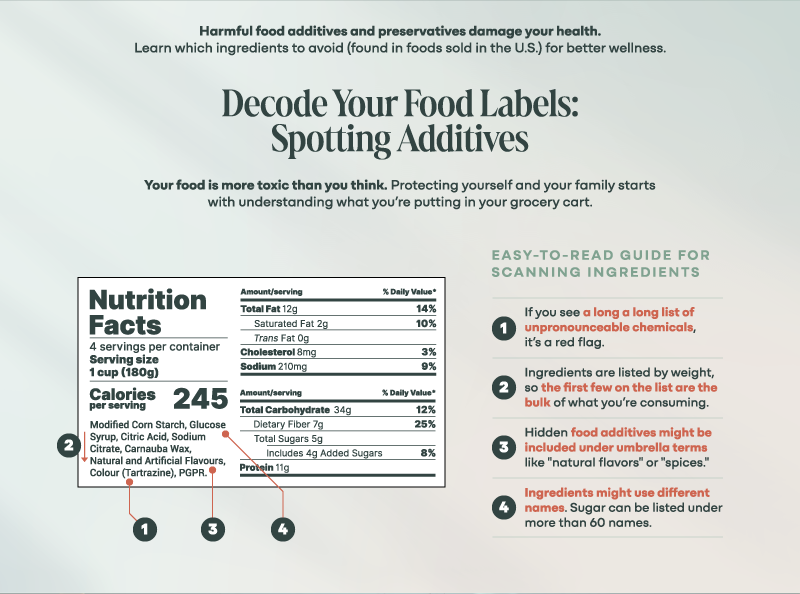
Deciphering Food Labels
Your food is more toxic than you think.
Protecting yourself and your family starts with understanding what you’re putting in your grocery cart.
If you’re not already a food label detective, it’s time to grab that magnifying glass.
Understanding Ingredient Lists
First things first: Ingredient lists are your new best friend.
If you see a long list of unpronounceable chemicals, it’s a red flag.
Stick with foods that have shorter, recognizable ingredient lists.
If you need a chemistry degree to understand what you’re eating, it probably isn’t actually food.
Here’s a pro tip: Ingredients are listed by weight, so the first few on the list are the bulk of what you’re consuming. If some weird chemical pops up near the top, put that item back on the shelf and back away slowly.
Spotting Hidden Food Additives
Hidden food additives might be included under umbrella terms like “natural flavors” or “spices.” Such terms sound harmless but can hide a variety of compounds.
Ingredients might also use different names. Sugar can be listed under more than 60 names such as syrup, glucose, or fructose, so keep an eye out for similar sneaky names (7).
And MSG (yes, that stuff that gives you headaches) can hide under sneaky aliases like “hydrolyzed vegetable protein” (8).
These tricks make it tough to know what you’re really eating, but once you learn their hide-and-seek game, it gets easier to spot them.
It helps to familiarize yourself with common culprits that often sneak into our foods. Knowing common places these additives hide, like processed snacks and pre-made sauces, can guide you to make healthier choices.
How We Can Help
Guiding people to reclaim their health and vitality is our greatest joy. Our entire practice is dedicated to supporting you to be who you really are, at home in your body, because your body is able to heal itself.
Book A Call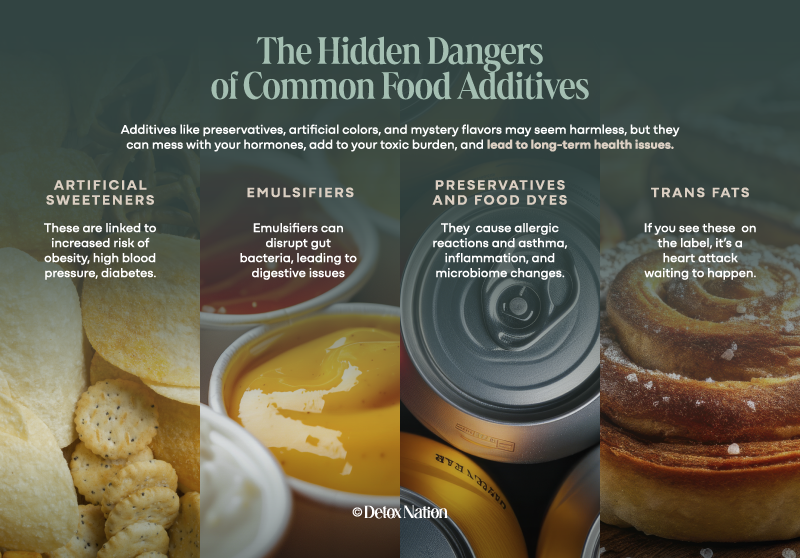
Common Toxic Food Additives to Avoid
Learning even a little about common food additives can pay big health dividends in the future.
Understand where they typically hide and how they might impact you.
Preservatives and Food Dyes
Preservatives like sulfur dioxide and potassium sorbate help keep food fresh longer.
That’s right. To extend the shelf life and make more profit, food companies add preservatives to our foods.
You’ll often find them in dried fruits, sodas, and wine.
Preservatives are known to cause allergic reactions and asthma, inflammation, and even microbiome changes (10).
Another one to watch is sodium benzoate, which is used in sodas and acidic foods. If mixed with vitamin C, it can form benzene, which is carcinogenic (9).
Color additives like tartrazine (Yellow No. 5) and Red Dye 40 make candies, drinks, and other foods visually appealing. (Especially to your kiddoes!) Think M&Ms, Doritos, and Kool-Aid.
They can cause attention-related issues like bouncing-off-the-walls in children (11).
Artificial Sweeteners and Flavors
Many processed foods use artificial sweeteners.
High fructose corn syrup and its derivatives are allll over the place, even though it’s linked to obesity, heart disease, diabetes, and other health issues.
Aspartame may be what’s giving your diet soda that bitter aftertaste. Some people report headaches, dizziness, anxiety, depression, insomnia, and more after ingesting aspartame even in small doses (12).
Sucralose and saccharine are in low-calorie snacks. They’re sweeter than sugar but can cause inflammation and alter gut bacteria (13, 14).
Sucralose is the most common artificial sweetener in use, and it’s been linked to increased risk of obesity, high blood pressure, diabetes, cardiovascular diseases, liver inflammation, cholesterol and triglyceride issues, and more (15).
How many people do you know that have one or more of the conditions above, and use the “blue packet” sweetener?
Artificial flavors like MSG can be found in packaged snacks and desserts. Their goal is to make food taste better, but their long-term effects are not well understood. Stick to foods with their natural fresh flavors.
Trans Fats and Their Effects
Trans fats are found in baked goods, margarine, and fried foods. Yes, they’re still a thing, even though everyone knows they’re terrible.
They’re also rampant in the restaurant industry.
These fats raise bad cholesterol (LDL) and lower good cholesterol (HDL), causing heart and artery problems.
If you see “partially hydrogenated oils” on the label, it’s basically a heart attack waiting to happen.
And don’t be fooled by “0 grams trans-fat” on the label; if the ingredients list “partially hydrogenated oil,” it’s in there.
Emulsifiers
Emulsifiers like lecithin and sodium laurel sulfate keep foods mixed and creamy without separating. You find them in salad dressings and sauces.
Emulsifiers can disrupt gut bacteria, leading to digestive issues (16).
Carrageenan, used in dairy products and even plant-based milks, is another emulsifier.
It can cause inflammation, a bloated belly, and bowel discomfort.
Worse, higher intakes are associated with higher risks of breast and prostate cancer (17).
Check those ingredient lists and see if it’s hiding in your fridge right now.
Seed Oils
Industrial seed oils like canola, corn, and sunflower are high in omega-6 fatty acids like linoleic acid.
They’re basically the backbone of every processed food in existence and are used in restaurants.
While essential in small amounts, too many omega-6s (as in the Standard American Diet) causes inflammation (18) so ditching them is important for your health.
Replace these oils with more balanced options like coconut oil or avocado oil.

The Regulatory Landscape
In the United States, food safety is ensured through regulatory bodies and processes designed to protect public health. But do they really protect us?
FDA and USDA Roles in Food Safety
The U.S. Food and Drug Administration (FDA) is responsible to monitor and ensure food safety, especially concerning additives.
The USDA, on the other hand, oversees meat, poultry, and egg products, focusing on ensuring that these are safe and properly labeled.
The FDA and USDA are supposed to protect us. But you can’t always count on the watchdogs to catch everything.
GRAS and Pre-Market Review Processes
I hate to break it to you, but you can’t just assume the FDA has your back. They’ve approved some questionable stuff over the years. (I’m looking at you, Partially Hydrogenated Oils.)
For example, ever hear of “GRAS?” It stands for “Generally Recognized As Safe,” which sounds nice—until you realize it’s more of a loophole than a safeguard.
GRAS substances don’t require FDA’s pre-market approval because they’re already recognized as “safe.”
Translation: The company says it’s safe, so they get the green light without the FDA actually reviewing and testing the item.
The bottom line is this: even if a food additive gets the green light from the FDA, that doesn’t mean it’s harmless.
You’ve got to do your own homework.
If it looks sketchy or has been banned in other countries (seriously, why do we allow this stuff?), err on the side of caution.
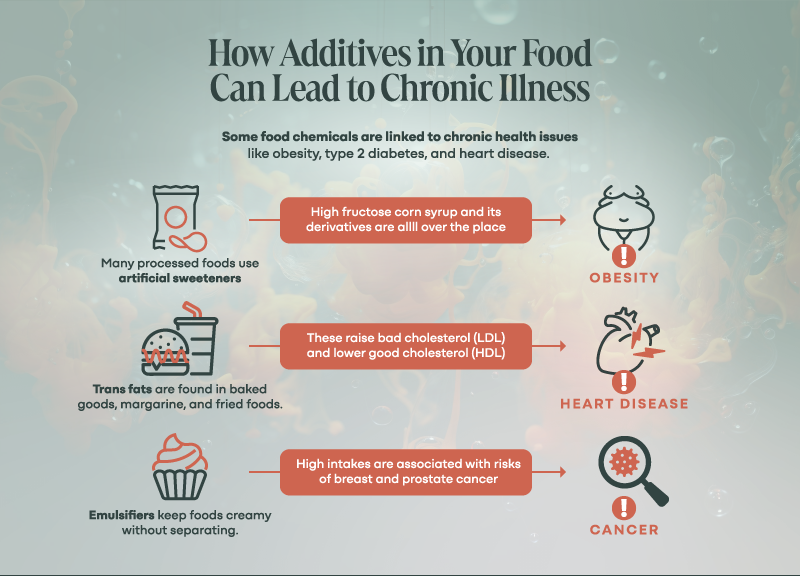
Health Concerns Linked to Toxic Additives
Toxic additives in food can have serious effects on your health.
These effects can range from chronic diseases to hormonal imbalances and even increase the risk of certain cancers.
Chronic Diseases From Food Chemicals
Some food chemicals are linked to chronic health issues like obesity, type 2 diabetes, and heart disease.
These additives might change how your body handles sugar and fat, leading to weight gain and higher chances of diabetes.
People who eat a lot of processed foods often consume sweeteners and preservatives that can impact heart health.
Endocrine and Hormonal Impact
Additives can also hijack your hormones, leading to problems like endocrine disruption, affecting your thyroid and hormonal balance (24, 25, 26).
If you have to crawl out of bed in the morning and drag yourself through your routine to face the day, it’s time to take a look at the chemical concoction you’re getting through your food.
Some chemicals alter bile and stomach acid levels, causing issues like a compromised microbiome or even a leaky gut.
Nagging gas, nausea, constipation, diarrhea, or revolving food sensitivities? It might not be the food itself, but rather what has been added to the food.
Link Between Additives and Cancer
There’s also a concerning link between certain additives and cancer (19, 20, 21, 22, 23).
Some chemicals used in food processing might increase the risk of cancers, such as breast cancer.
These additives can potentially trigger changes in your body that can lead to cancer over time.
While more research is needed to fully understand all the risks, it’s wise to stay informed and cautious about the additives in your food.
Addictive Potential
Ultra-processed foods, with their elaborate combinations of chemicals, are addictive.
The criteria to determine addictive ability was established by the Surgeon General in 1988 and includes the:
- Ability to cause highly controlled or compulsive use
- Ability to effect the brain and alter mood
- Ability to reinforce behavior
More recently, the ability to trigger cravings was added as a fourth consideration (27).
Let’s think about these.
Compulsive use? One potato chip company put this right in our faces with their slogan “You Can’t Eat Just One.”
Mood altering? Have you ever gone into an ice-cream fugue where you remember pulling it out of the freezer; you remember taking the first bite; and then the next thing you knew the container was empty?
When eating something changes your mood and your physiology such that you “feel better” or have more energy, of course you will eat it again and the behavior gets reinforced.
And come on, cravings? What was your most recent craving? That juicy burger from the local fast-food restaurant? Chocolate? Or maybe those bread sticks coated in garlic salt?
I’ll bet none of those criteria surprise you.
But did you know that those criteria were initially established in regard to cigarettes and tobacco?
Yup, the same standards we used to classify smoking as addictive can (and should) be applied to the foods we eat.
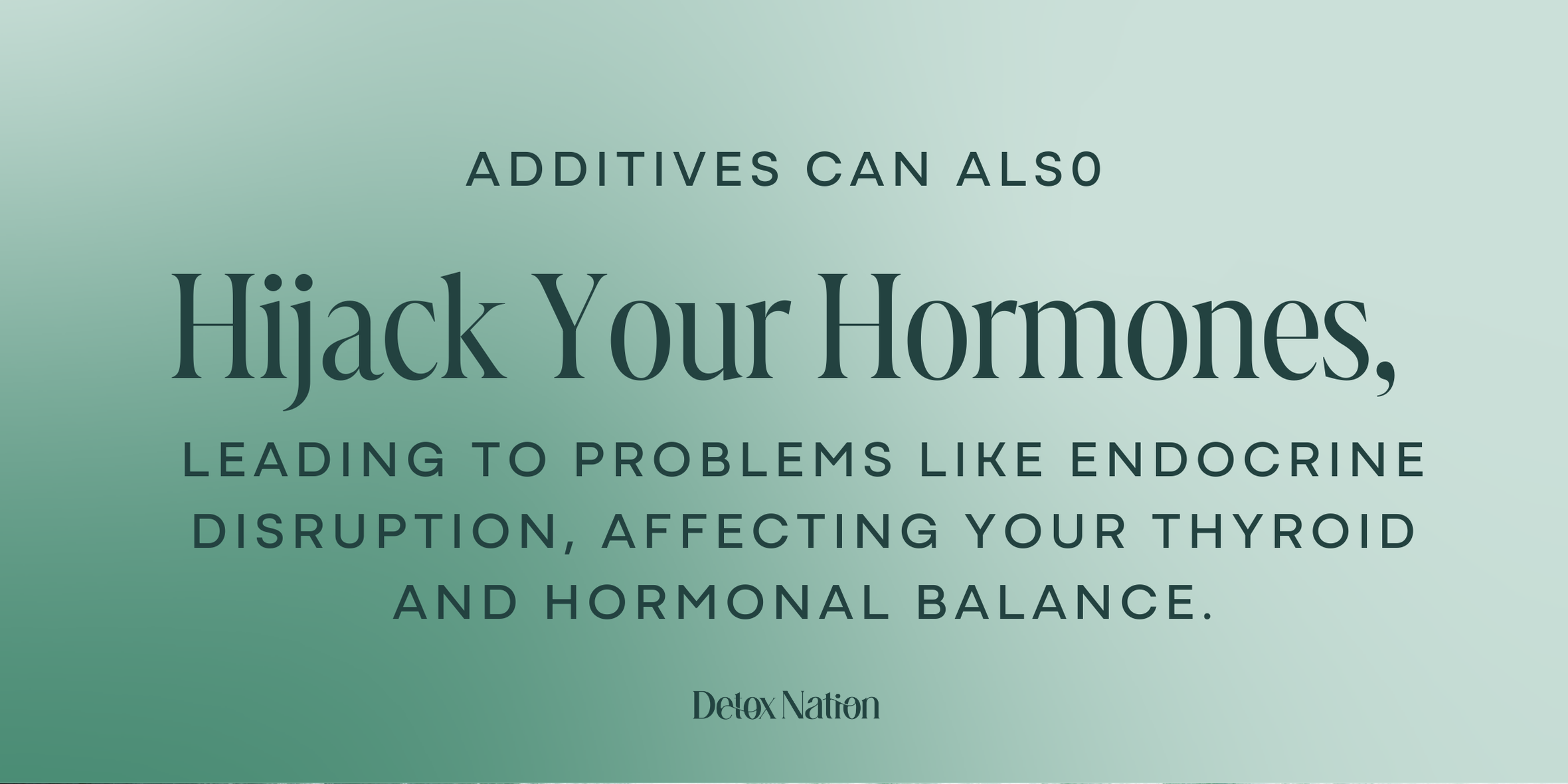
Protecting Yourself From Harmful Additives
Here’s the uncomfortable truth: your health is taking hits every day from those tiny, hard-to-pronounce words on your food labels.
Additives like preservatives, artificial colors, and mystery flavors may seem harmless, but they can mess with your hormones, add to your toxic burden, and lead to long-term health issues.
The good news? You don’t have to be at the mercy of these toxic additives. Here are a few simple ways you can take back control.
Avoid Ultra-Processed Foods
Eat real food.
Ditch the ultra-processed junk and go for whole foods whenever possible.
Organic fresh fruits and veggies are your best bet.
You don’t need to be a gourmet chef to make simple, healthy meals.
Cooking at home gives you total control over what’s going into your body, which is especially important if you’re trying to dodge those sneaky additives.
Buy Whole Foods and Organics
Choosing whole foods and organics can greatly limit your intake of harmful additives like artificial flavors and preservatives.
Whole foods, like fresh fruits and vegetables, contain fewer or no additives, keeping you away from unwanted chemicals.
Growing your own produce or buying from local farmers’ markets can also reduce exposure to pesticides and other contaminants.
And allllways remember to thoroughly wash your fruits and vegetables!
Read and Understand Nutrition Labels
Reading food labels carefully can help you spot and avoid toxic additives. (Become a food-label Ninja!)
Look for chemical names that are hard to pronounce, which can be harmful if consumed frequently. Compare products and choose ones with fewer ingredients that you recognize.
When you find additives that concern you, consider alternatives like homemade versions or products labeled “no additives.”
These small changes make a significant impact on your daily diet and overall well-being.
Conclusion
At the end of the day, it’s up to you to protect yourself.
Yeah, it’s terrible that our food system isn’t as clean as it should be, and it’s a bummer that we can’t just trust everything on the shelves.
But here’s the silver lining: you are in control of what you eat.
No one has the time to overhaul their entire kitchen overnight. But little changes can make a big difference, and I promise it’s not as complicated as it seems.
Also, there’s no need to aim for perfection. Even just swapping out one or two bad foods for healthier ones is a huge win.
You’re not in this alone. We’re all just out here trying to navigate the nonsense and keep ourselves and our families healthy. You’ve got this!

Frequently Asked Questions
Your favorite snacks might be hiding some worrying ingredients. Discover where these additives hide and easy ways to enjoy safer treats.
1. Are there harmful additives hiding in my favorite snacks?
Yes, many common snacks contain additives like Tartrazine, Red Dye No. 3, and brominated vegetable oil, which experts consider potentially harmful. These ingredients often show up in brightly colored or highly processed foods—check your pantry labels to spot them.
2. How can I satisfy my sweet tooth without consuming artificial additives?
Opt for sweets made with natural colors and flavors. Avoid high-fructose corn syrup and look for alternatives like honey or maple syrup. Reading ingredient labels carefully can help you make safer choices without sacrificing taste.
3. What is bromide, and where is it found in food and drinks?
Brominated vegetable oil (BVO), a source of bromide, is often added to sodas and sports drinks. To avoid it, choose beverages like herbal teas, water, or fresh juices. These not only hydrate you but also reduce your exposure to unwanted chemicals.
4. What are some easy ways to avoid harmful food chemicals?
Stick to whole foods like fresh fruits, vegetables, and unprocessed meats. Avoid artificial colors, preservatives, and flavor enhancers like MSG, sodium nitrite, bromate, and butylated hydroxytoluene (BHT). Steer clear of diet or sugar-free products and coffee creamers. Cooking at home gives you more control and peace of mind over what goes into your meals.
How We Can Help
Guiding people to reclaim their health and vitality is our greatest joy. Our entire practice is dedicated to supporting you to be who you really are, at home in your body, because your body is able to heal itself.
Book A Call
